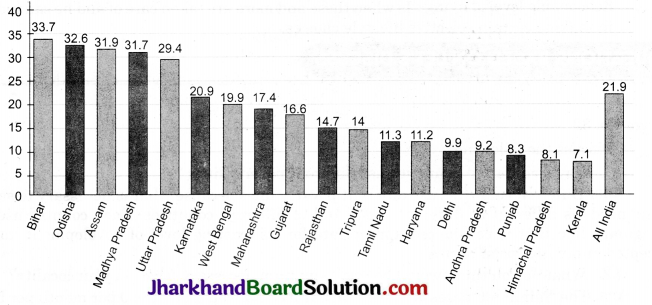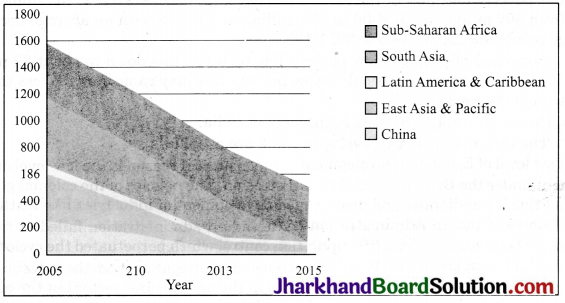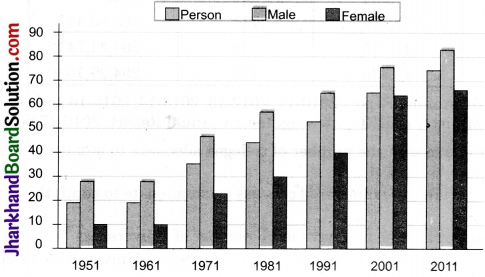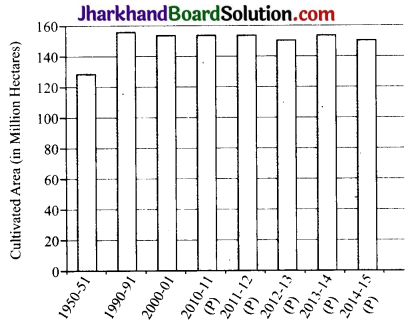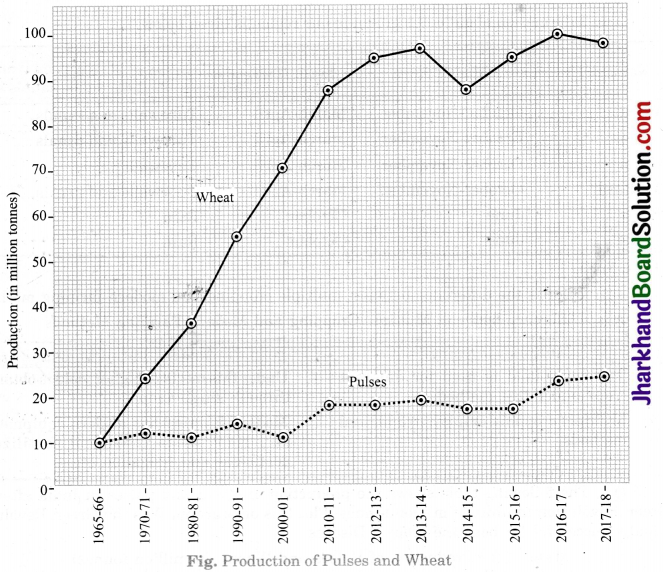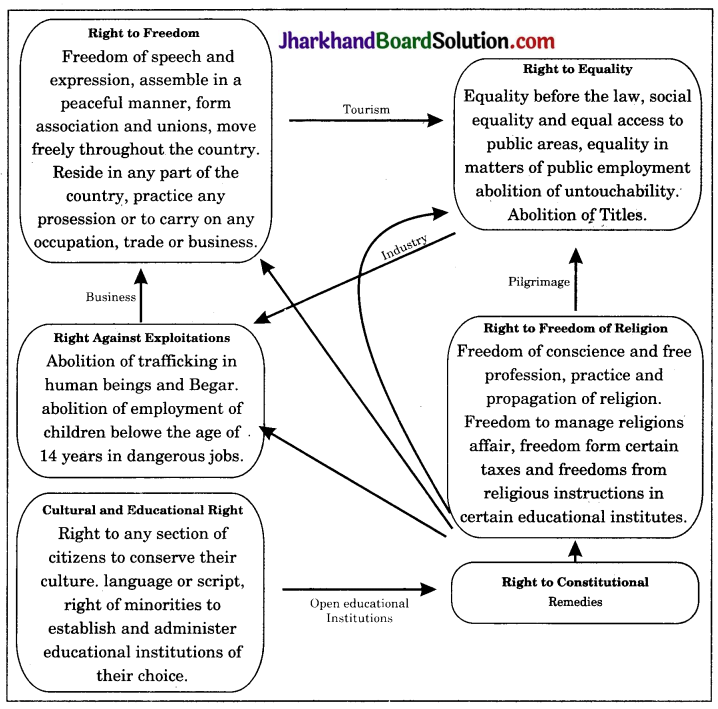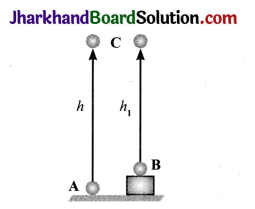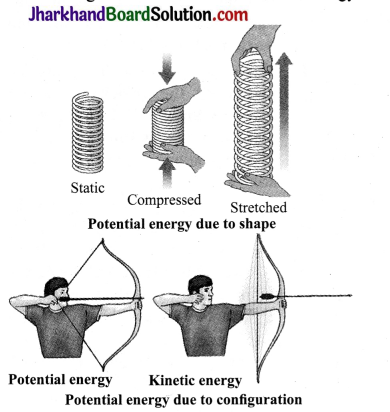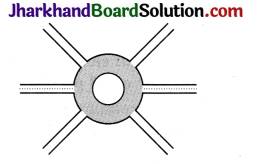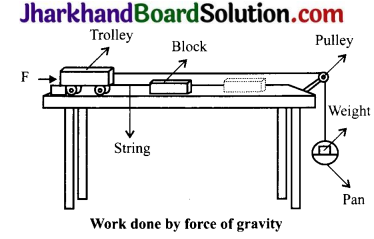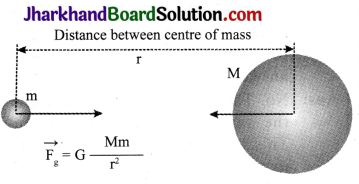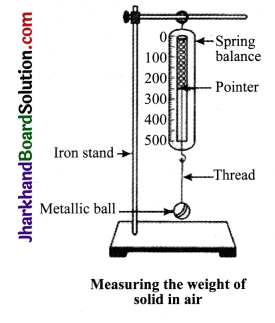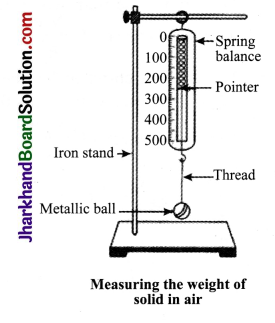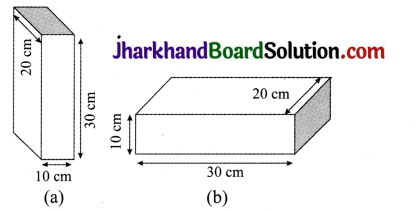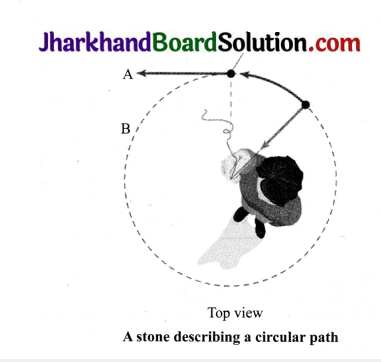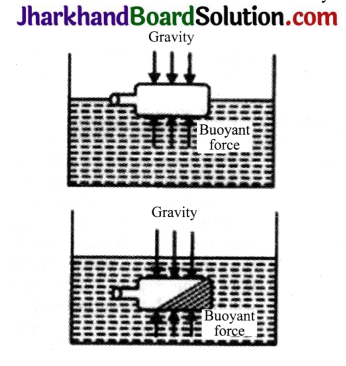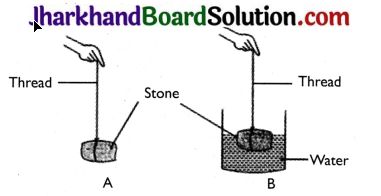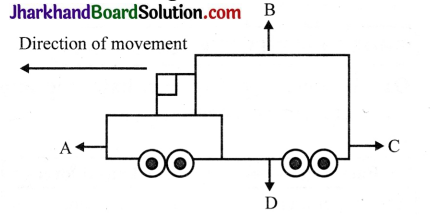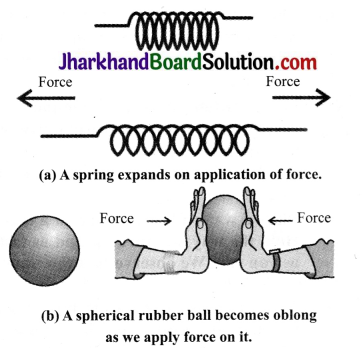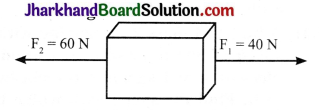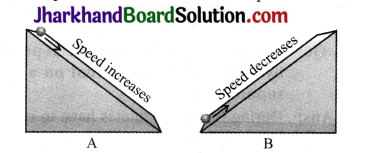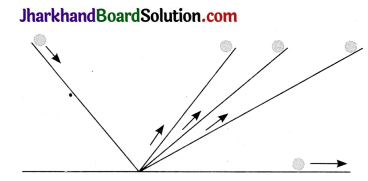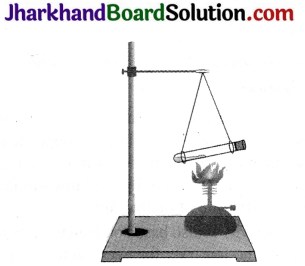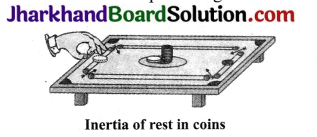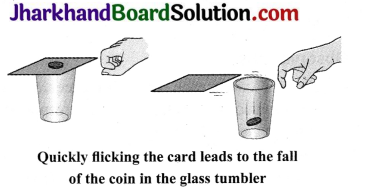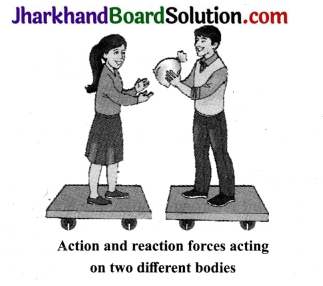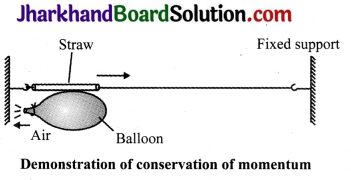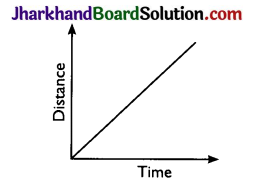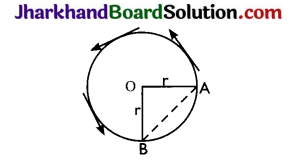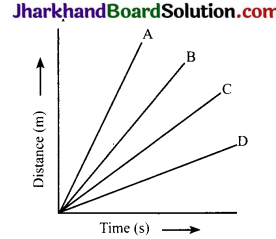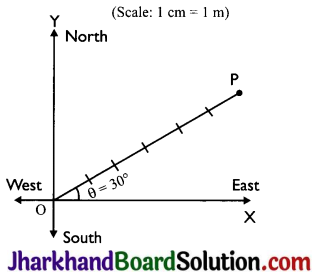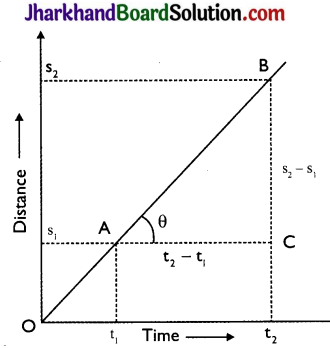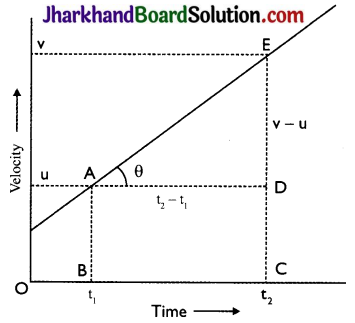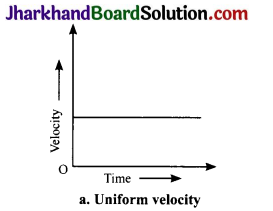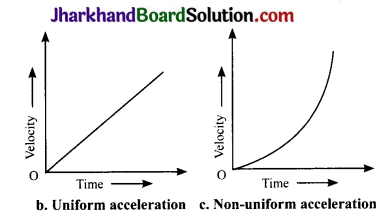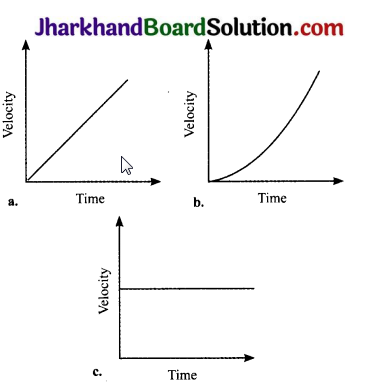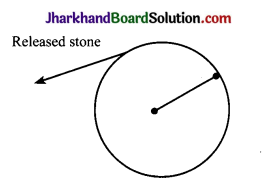JAC Board Class 9th Social Science Solutions Economics Chapter 4 Food Security in India
JAC Class 9th Economics Food Security in India InText Questions and Answers
Page No. 43
Question 1.
Some people say that the Bengal famine happened because there was a shortage of rice. Study the table and find out whether you agree with the statement?
Table 4.1 Production of Rice in the Province of Bengal
| Year | Production (Lakh tonnes) | Imports (lakh tonnes) | Exports (lakh tonnes) | Total Availability (lakh tonnes) |
| 1938 | 85 | 04 | – | 85 |
| 1939 | 79 | 03 | – | 83 |
| 1940 | 82 | 02 | – | 85 |
| 1941 | 68 | – | 01 | 70 |
| 1942 | 93 | 03 | – | 92 |
Answer:
If we look at the table, rice production has been consistent in Bengal with a decline in 1941 only. We noticed that, in 1943 the total availability of rice was 79 lakh tonnes which is not too bad. So, I do not agree with the statement that the Bengal famine happened because there was a shortage of rice.
Question 2.
Which year shows a drastic decline in food availability?
Answer:
The year 1941 shows a drastic decline in food availability.
Page. No. 45
Question l.
Why is agriculture a seasonal activity?
Answer:
Agriculture is a seasonal activity as it employs people during times of sowing, transplanting and harvesting only . Farm workers remain unemployed for about four months every year during the period of plant consolidation and maturing.
![]()
Question 2.
Why is Ramu unemployed for about four months in a year?
Answer:
Ramu works as a casual labourer in agriculture. Agriculture is a seasonal activity. Therefore, in the period of plant consolidation and maturing in a year, which is four months, he remains unemployed.
Question 3.
What does Ramu do when he is unemployed?
Answer:
Ramu does other activities. Sometimes, he gets employment in brick laying or in construction sc tivities in. the village.
Question 4.
Who are supplementing the income in Eamu’s family?
Answer:
Ramu’s wife Sunhari and his eldest son, Somu, are supplementing the income in Ramu’s family
Question 5.
Why does Ramu face difficulty when he is unable to have work?
Answer:
Ramu faces difficulty when he is unable to have work because during this often his small kids have to sleep without food, and milk and vegetables will not be the regular part of meals in his family.
Question 6.
When is Ramu food insecure?
Answer:
Ramu is food-insecure during the tour months when he remains unemployed because of the seasonal nature of agricultural work.
![]()
Question 7.
Does Ahmad have a regular income from rickshaw pulling?
Answer:
No, Ahmad does not have a regular income from rickshaw pulling.
Question 8.
Flow does the yellow card help Ahmad run his family even with small earnings from rickshaw-pulling?
Answer:
Ahmad has a yellow card which is PBS card for below poverty line people. With this card, Ahmad gets sufficient quantity of wneat, rice, sugar and kerosene oil for his daily use at half the market price. In this way, Ahmad is able to survive with less than sufficient earnings for his big family where he is the unly earning member.
Page. No. 47
Study of the graph 4.1 end answer the following questions :
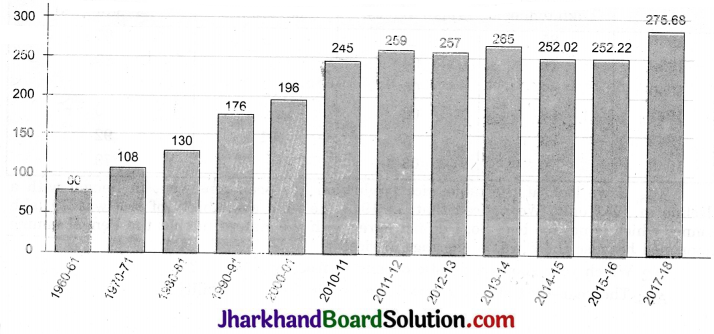
Source: Department of Agricultural cooperation and farmers welfare, Annual report, [2017-18]
(a) In which year did our country cross the 200 million tonnes per year mark in food grain production?
Answer:
In the year 2010-11, our country crossed the 200 million tonnes per year mark in food grain production.
(b) In which decade did India experience the highest decadal increase in foodgrain production?
Answer:
In decade 2000-2010 India experienced the highest decadal increase in food grain production.
(c) Is production increase consistent in India since 2000-01?
Answer:
No, the increase in food grain production did not remain consistent after 2000-01.
JAC Class 9th Economics Food Security in India Textbook Questions and Answers
Question 1.
How is food security ensured in India?
Answer:
Food security is ensured in India by:
- Creation of Buffer Stock,
- Introdction of the Public Distribution System.
- Implemention special programmes like:
(a) Food-for-work programme.
(b) Mid-day meal in Schools
(c) Integrated child development services.
![]()
Question 2.
Which are the people more prone to food insecurity?
Answer:
A large section of people suffer from food insecurity in India. The worst affected are:
- The landless people with little or no land to depend on.
- Traditional artisans.
- Providers of traditional services, petty self employed workers and destitutes, including beggars.
- Urban casual labourers engaged in seasonal activities.
- The SCs, STs and some sections of OBCs.
- People affected by natural disasters.
Question 3.
Which states are more food-insecure in India?
Answer:
The states of Uttar Pradesh, (Eastern and South-eastern parts) Bihar, Jharkhand, Gdisha, West Bengal, Chhattisgarh, parts of Madhya Pradesh and Maharashtra are more food insecure in India.
Question 4.
Do you believe that Green Revolution has made India self-sufficient in food grains? How?
Answer:
After independence, Indian policy makers adopted all measures to achieve self-sufficiency in food grains. India adopted a new strategy in agriculture which resulted in the Green Revolution, especially in the production of wheat and rice. The success of wheat was later replicated in rice.
The increse in foodgrains production was unprecedented. The highest rate of growth was achieved in Uttar Pradesh and Madhya Pradesh, which was 44.01 and 30.21 million tonnes in 2015-16. The total foodgrain production was 252.22 Million tonnes in 2015-16.
Uttar Pradesh and Madhya Pradesh recorded a significant increase in production of wheat which was 26.87 and 17.69 million tonnes in 2015-16, respectively. West Bengal and UP, on the other hand, recorded significant increase in production of rice, which was 15.75 and 12.51 million tonnes in 2015-16 respectively. So, it is believed that Green Revolution has made India self sufficient in food grains.
Question 5.
A section of people in India are still without food. Explain.
Answer:
A large section of people in India are still without food. The worst affected groups are landless people with little or no land to depend upon, traditional artisans, providers of traditional services, petty self-employed workers and destitutes including beggars. In the urban areas, the food insecure families are those whose working members are generally employed in ill-paid occupations and casual labour market.
Besides, some groups of SCs, STs and OBCs are also included in it. They are paid very low wages that just ensure bare minimum wages for survival. These people suffer from chronic hunger because of their low income and in turn their inability to buy food even for survival.
![]()
Question 6.
What happens to the supply of food when there is a disaster or a calamity?
Answer:
Due to a disaster or a calamity, total production of food grains decreases. It creates a shortage of food in the affected areas. Due to shortage of food, the prices go up. At such high prices, some people cannot afford to buy food. If such a calamity happens in a very widespread area or over a longer time period, it may cause a situation of starvation.
Question 7.
Differentiate between seasonal hunger and chronic hunger.
Answer:
Seasonal Hunger:
Seasonal hunger is related to cycles of food growing and harvesting. This is prevalent in rural area because of the seasonal nature of agricultural activities, and in urban areas because of casual labour. This type of hunger exists when a person is unable to get work for the entire year.
Chronic lunger:
Chronic hunger is a consequence of diets persistently inadequate in terms of quantity and/or quality. Poor people suffer from chronic hunger because of their very low income and in turn their inability to buy food even for survival.
Question 8.
What has our government done to provide food security to the poor? Discuss any two schemes launched by the government?
Answer:
India has become self-sufficient in food grains during the last thirty years because of a variety of crops grown all over the country. The availability of food grains at the national level has further been ensured with a carefully designed food security system implemented by the government. This system has two components:
(a) Buffer Stock: Buffer Stock is the stock of food grains, namely wheat and rice, procured by the government through Food Corporation of India. The FCI purchases wheat and rice from the farmers at minimum support price in states where there is surplus production. The purchased food grains are stored in granaries to distribute in the deficit areas and among the poorer strata of society at a price lower than the market price.
(b) Public Distribution System:
The food procured by the FCI is distributed through government regulated ration shops among the poorer sections of the society. This is called Public Distribution System. These ration shops are known as Fair Price Shops. These shops keep stock of food grains, sugar, kerosene oil for cooking. These items are sold to people at a price lower than the market price. Any family with a ration card can buy a stipulated amount of these items every month from their nearby ration shop.
In addition to these, Government of India has launched many other schemes. Two of them are as follows :
- Antyodaya Anna yojana: This scheme was launched in December 2000. Under the scheme one crore of the poorest among the BPL families covered under the Targetted Public Distribution System were identified.
- Annapurna Scheme (APS) With special target groups of ‘poorest of the poor’ and ‘indigent senior citizens’ respectively
Question 9.
Why buffer stock is created by the government?
Answer:
Due to the following reasons, buffer stock is created by the government.
- A buffer stock of food grains is created by the government, so that it can be distributed in food deficit areas and among the poorer strata of society at a price much lower than the market price.
- A buffer stock also helps to resolve the problem of food shortage during adverse weather conditions, a disaster or a calamity.
- Maintaining buffer stock is a step taken by the government in order to ensure food security.
10. Write notes on:
1. Minimum Support price
2. Buffer Stock Issue price
3. Fair price shop.
Answer:
1. Minimum Support Price:
The FCI purchases wheat and rice from the farmers at a pre-announced price. This price is called Minimum Support Price. Minimum Support Price is declared by the government every year before the sowing season to provide incentives to the farmers for raising the production of these crops.
2. Buffer Stock:
Buffer Stock is the stock of food grains, namely wheat and rice, procured by the government through Food Corporation of India. The FCI purchases wheat and rice from the farmers in states where there is surplus production-at Minimum Support Price. The purchased food grains are stored in granaries to distribute in the deficit areas and among the poorer strata of society at a price lower than the market price.
3. Issue Price:
The price at which food grains are distributed by the government in the deficit areas and among the poorer people is known as Issue Price.
4. Fair Price Shop:
The food procured by the FCI is distributed through government-regulated ration shops among the poorer sections of the society. These Ration Shops are known as Fair Price Shops. Food grains, sugar, kerosene oil are sold to people at a price lower than the market price through these ration shops.
![]()
Question 11.
What are the problems of the functioning of ration shops?
Answer:
The problems of the functioning of ration shops are as follows:
- PDS dealers are sometimes found resorting to malpractices:
(a) Diverting the grains to open market to get better margin.
(b) Selling poor quality grains at ration shops.
(c) Irregular opening of the shops. - Ration shops often have unsold stocks of poor quality grains left.
- Sometimes, stored grains are rotten away and also eaten by rats.
- The three types of cards and the range of prices is a hinderence in the path of progress of PDS.
Question 12.
Write a note on the role of co-operatives in providing food and related items.
Answer:
The cooperatives are playing an important role in ensuring food security in India, especially in the Southern and Western parts of the country. The cooperative societies set up shops to sell low-priced goods to poor people. For example, out of all fair price shops running in Tamil Nadu, around 94 percent are being run by the cooperatives. In Delhi, Mother Dairy is making strides in provision of milk and vegetables to the consumers at controlled rate decided by Government of Delhi.
Amul is another success story of co-operatives in milk and milk products from Gujarat. It has brought about the white revolution in the country. There are many more cooperatives running in different parts of the country ensuring food security of different sections of society.

